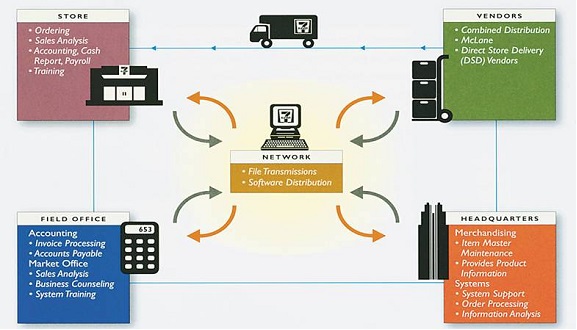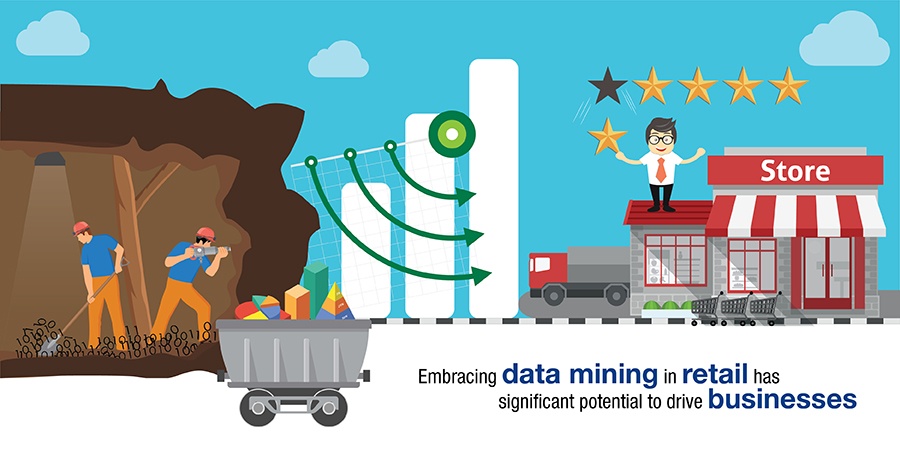Data Mining In Retail Industries: The Future
There is no doubt that data has been a game-changer for retailers for years. To understand the retail lifecycle, the industry experts and shop owners have long collected data from all points of contact. Earlier, the information was gathered from order books and bills, then came invoices, sales points, and purchase areas. Finally, it shifted to Retail POS Software Solution and inventory management systems. The data collected was put to one use: to predict what the customers will buy next.
These methods of data gathering don’t work now. The retail industry is inundated with information. The data created from average sales and online shopping history is expanding at a furious pace. The ease of availability of products through e-commerce sites has exploded information. It signifies that a new method for data collection and interpretation was required.
What Is Data Mining In Retail Sector?
As technology boomed, retailers were able to move from guesswork to a more scientific approach to data interpretation and collection — door to door surveys transformed into online and personalised ones which morphed into cookies and data crawlers. The latter is automated technology that tracks the moves of online shoppers and amass data. These technologies accumulated mountains of data which needed proper interpretation. It is here that data mining steps in the field of retail. Check Out the role of data mining in retail sector.

Called data discovery or knowledge discovery, data mining is the procedure of turning raw data into useful information. The process necessitates:
- Analysing the raw data from many perspectives and angles
- Categorise the data and summarising it into usable info that is then utilised to:
-
- Cut cost of operations
- Increase revenue
- Do both
-
Many analytical tools can be employed to analyse data, out of which a data mining software is one. In simple terms, data mining pinpoints patterns between the hundreds of fields included in the retail sector. The software crawls through dozens of databases and finds correlations such as the beer-diaper connection which showed that men who buy diapers tend to purchase beer with it.
- The significance of data mining in retail comes from the benefits it offers, which are:
- Decrease the cost is borne by a business
- Identifying the behaviour of the consumer
- Exploring the trends in retail and pattern of shopping by customer
- Bettering the quality of service to patrons
- Improve customer satisfaction
- Enhance customer retention
- Augment the return on investment to business
An example that helps explain the value data mining brings to the retail sector is new customer acquisition and old customer retention. We all know that the retailers are plagued with the competition. Losing customers is common. The one way to retain them is to understand what they wish to buy and give them the incentive to purchase the same. Through data mining, one can use detailed sales history to pinpoint where to target the customer and hence retain the patron.

Data Mining: Not A New Technique In Retail
Retailers and shop owners have been mining data for years to improve business. The term is relatively new, but the technology is old. The difference is that the tools used to extract or discover knowledge have changed. First powerful computers were employed to sift through large volumes of reports to find trends and patterns; now, software are utilised to do the same.
The improvement in technology, such as immense storage space, better statistical software, and high processing power, has made data mining considerably accurate. The precision has brought down the cost borne by retailers, too.
Any retailer who wishes to gain an edge on their competitors must appropriate data mining. Software that helps in data mining give your precise information on every segment of the industry. From how to maintain customer relationship to how to improve the performance, from sales trends to buying habits of all patrons, there is no inch data mining leaves unseen. Preferences, peak traffic hours, seasonal changes, delivery times, and lead period are just the tip of the iceberg data mining can uncover.


